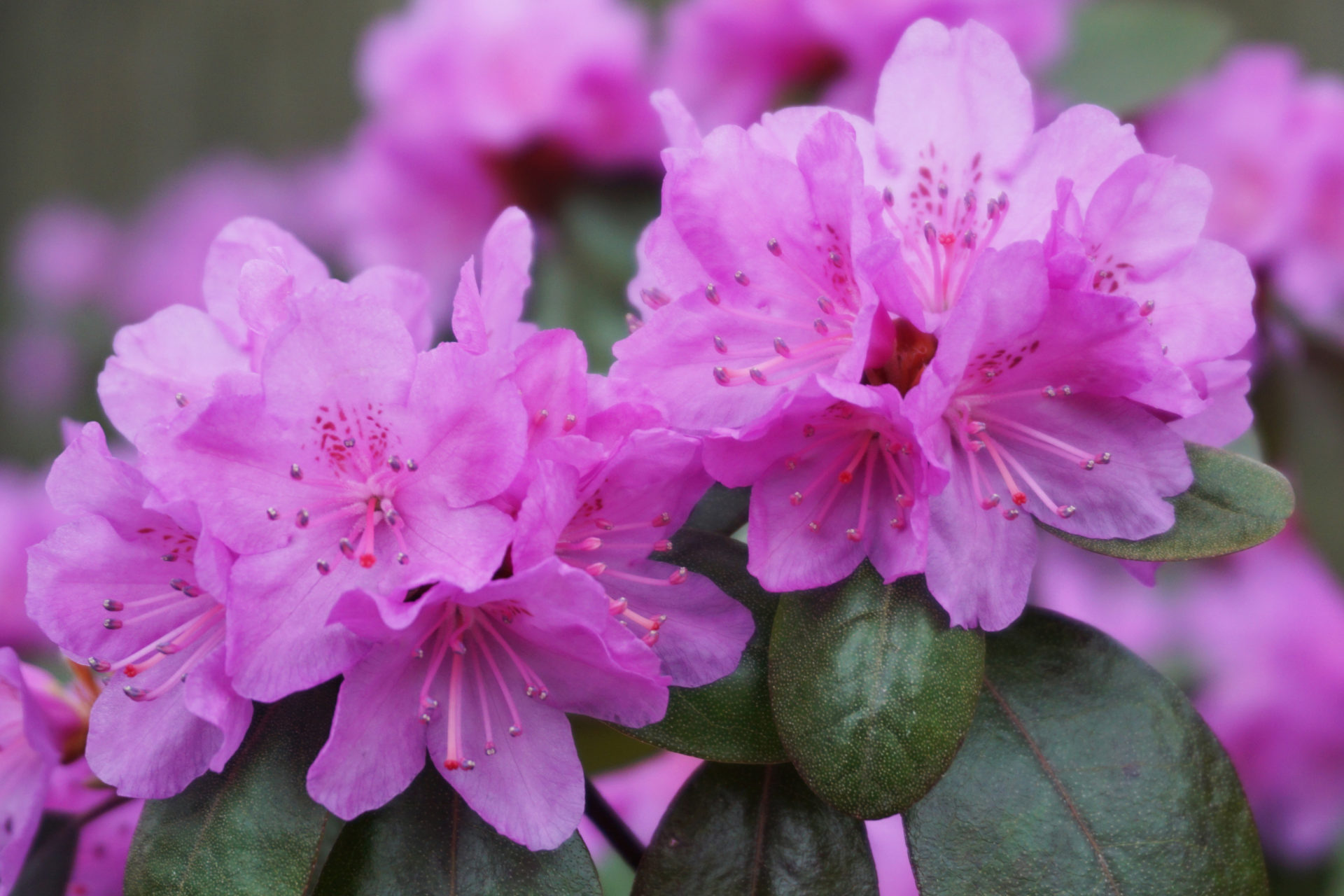
by R. Wayne Mezitt
One of the most frequent questions we hear at our garden centers is “when should I prune my rhododendrons?” The easy (and correct) answer is “most anytime”. Rhododendrons and azaleas are resilient shrubs that respond well to being cut back. They also have the advantage of holding latent buds that can initiate new growth when necessary.
But to best appreciate their flowers, the ideal time to prune rhododendrons and azaleas for most of us is during the weeks just after the blooms have finished. Pruning before the end of June helps minimize the time we see that just-cut-back appearance, removes spent flowers before they divert energy to form seeds, enables normal growth to occur and allows plenty of time for flower buds to form for next year’s bloom.
To maintain compact growth, the best method to prune any rhododendron or azalea is to cut back each branch to the desired height just above a whorl of leaves and buds. This is easiest to accomplish on younger plants. Rhododendron foliage whorls, along with growth buds, are usually retained for three years, so this need not be done every year. Sometimes it is more efficient to use hedge shears on the entire bush instead of taking the time to hand-prune each individual branch. This technique is particularly effective with evergreen azaleas and the small leaf rhododendrons like PJM, Landmark and Olga Mezitt – the “Early Rhododendrons”. It can also be appropriate on large-leaf kinds when you have many plants to maintain, or when a more formal, tightly-groomed effect is desired.
For more overgrown plants that need a drastic reduction in size, cut the branches back to a point where some latent buds along the branch are visible. These buds are visible as tiny pink pin-head-size dots on thicker branches. Such drastic cut-backs can be spread over a period of two or three years, with a portion of uncut branches being left for the next year. Many azaleas and rhododendrons, especially the small-leaf types, respond to being cut back closer to the ground all at once. I’ve done this several times now with the 8 ft. high Rhododendron PJM that has overgrown in my front yard – the new growth on the now-2-foot-high cutback stems appears within a couple weeks, and it even produces blooms the following spring!
Sometimes a rhododendron has grown so tall it doesn’t make sense to rejuvenate such an old plant to bring it back to its former denser-growing form. The artistically shaped trunks on mature rhododendrons can be very attractive, and they are certainly a distinctive indicator of a more established, natural looking garden. A rhododendron that has become tree-like creates unique opportunities for under-planting with other types of plants that grow well in shade, like Hosta, Leucothoe, and low-growing shrubs, or groundcovers like Pachysandra and Vinca. To maintain these high branched rhododendrons, remove dead or crossed branches and prune-off to a major trunk any overhanging branches that look out of place or impede you.
New growth on the Summer Azaleas (like Pink & Sweet, Weston’s Innocence and Millennium), which flower in June and July, tends to hide the flowers yet to open, so these can be sheared in May before they bloom. Shearing back half of their new growth exposes the current year’s yet-to-open flowers, helps keep the shape more compact and allows plenty of time for additional growth which will establish next year’s flower buds. Just be sure to identify this year’s flowers and take care not to remove them before they open.
Rhododendrons and azaleas are long-lived plants, and properly maintained, retain their appeal for decades. They require minimal care to maintain their beauty, and any mistakes you might make when you prune them will soon be remedied by their natural vigor and resilience.









